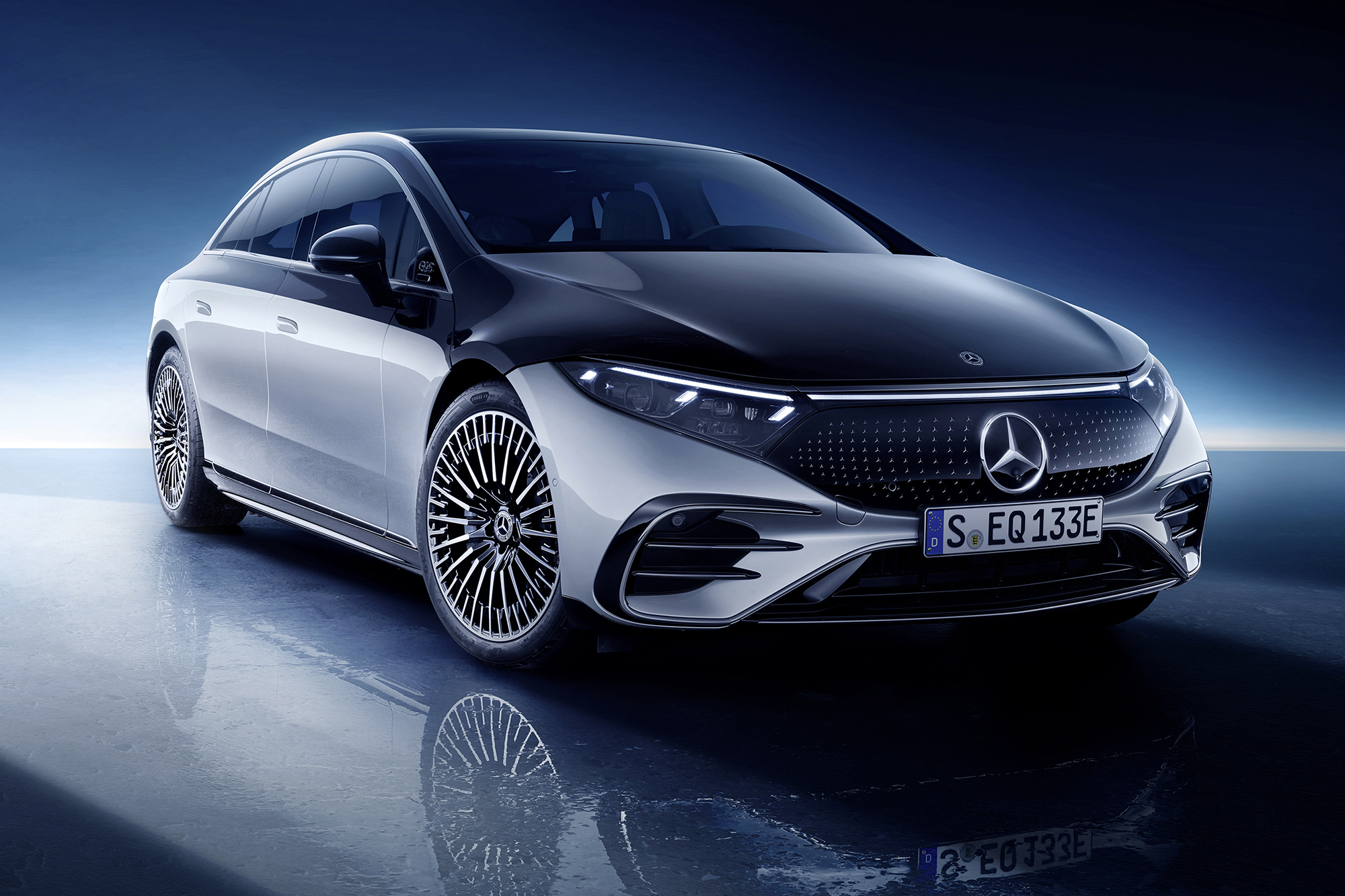Behold the world’s most aerodynamic production car, in all its undisguised glory. Mercedes-Benz has at last revealed its big new EQS electric sedan, debuting with a record-breaking 0.20 co-efficient of drag.
The cab-forward design and fastback tail of the EQS don’t just make it ultra-aerodynamic. Its proportions are intended to whisper “I don’t burn nasty fossil fuels”.
This isn’t quite the way design chief Gorden Wagener puts it. But the brief for the design team was to create something that wouldn’t be mistaken for an S-Class, the equivalent of the EQS from the traditional Mercedes-Benz line-up.

To really ram home the point, the EV has a liftback, not an old-school boot. And there won’t be the option of a super-luxurious four-seat interior, as in the S-Class; the EQS will only come configured as a five-seater.
At the front, headlights connected by a light band and the deep black radiator grille form the distinctive face. Three light dots, combined with the characteristic Mercedes eyebrow, form the daytime running light signet. LED High Performance headlamps come as standard, but the advanced Digital Light headlamp tech is available as an optional extra.
Interestingly, Mercedes-Benz suggests the bonnet can only be opened by a workshop specialist for maintenance work – such as replacing the interior air filter. It remains to be seen whether the owner can access it themselves.
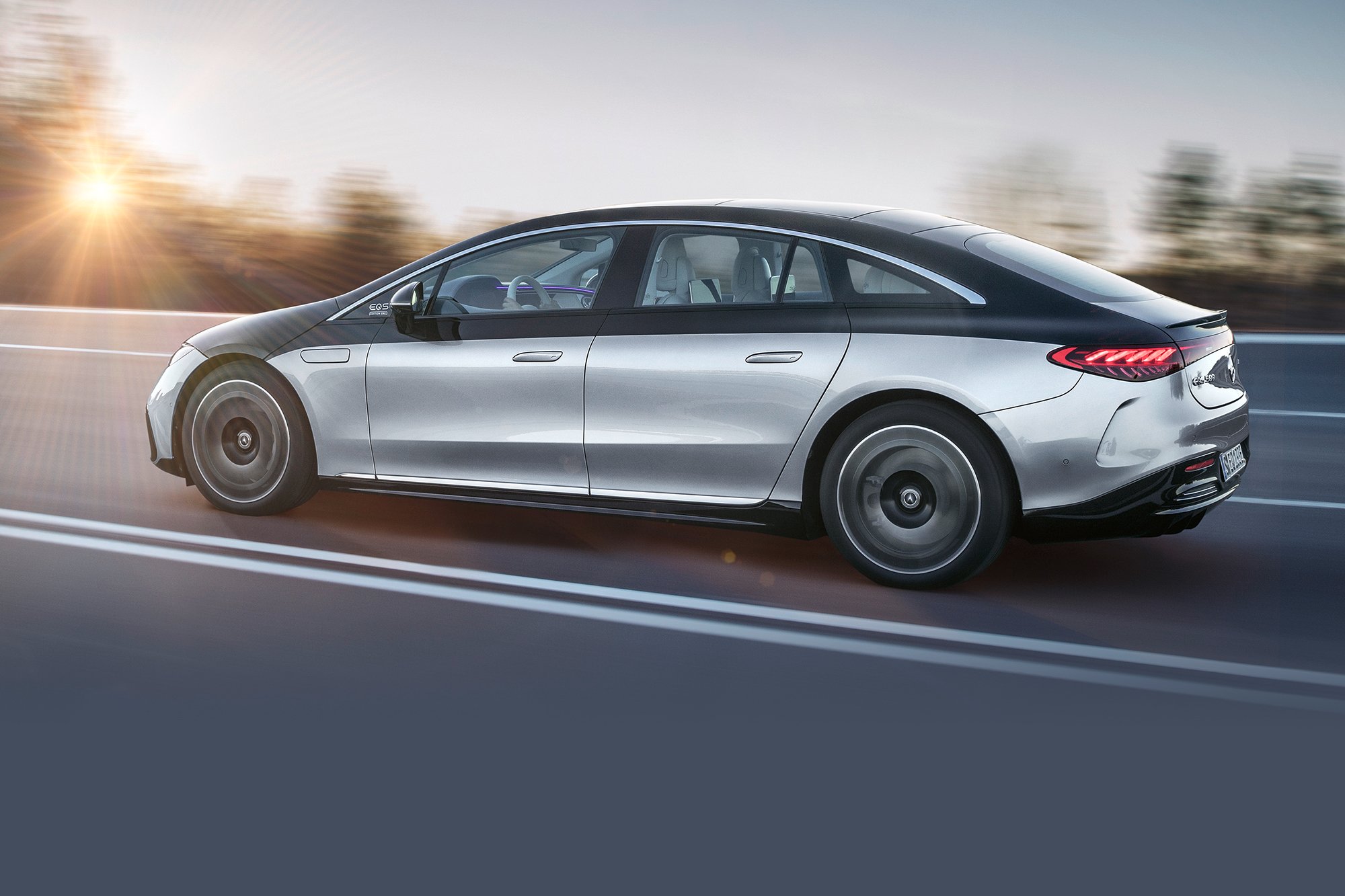
The A-pillar, which has been moved far forward, and the C-pillar at the rear also generate space for a generous passenger compartment.
Chrome accents highlight design focal points like the line of the windows, and high-quality painted contrasting surfaces can also be found in the lower area of the vehicle.

Flush door handles are standard on all models while a panoramic sunroof is available as an option.
As at the front, the EQS also has a continuous light band at the rear – a distinguishing feature of Mercedes’s electric vehicle range.
Inside, the large curved MBUX Hyperscreen unit sweeps almost from pillar to pillar. Three screens sit under a cover glass and appear to merge into one. The 12.3-inch OLED display for the front passenger gives them their own display and control area.
The most important thing to know about the EQS though, is that while it shares some chassis components with the S-Class, it’s built on a purpose-designed-for-EV platform that’s effectively all new. Known inside Mercedes-Benz simply as EVA (for Electric Vehicle Architecture), it enables the EQS’s short-overhang silhouette.
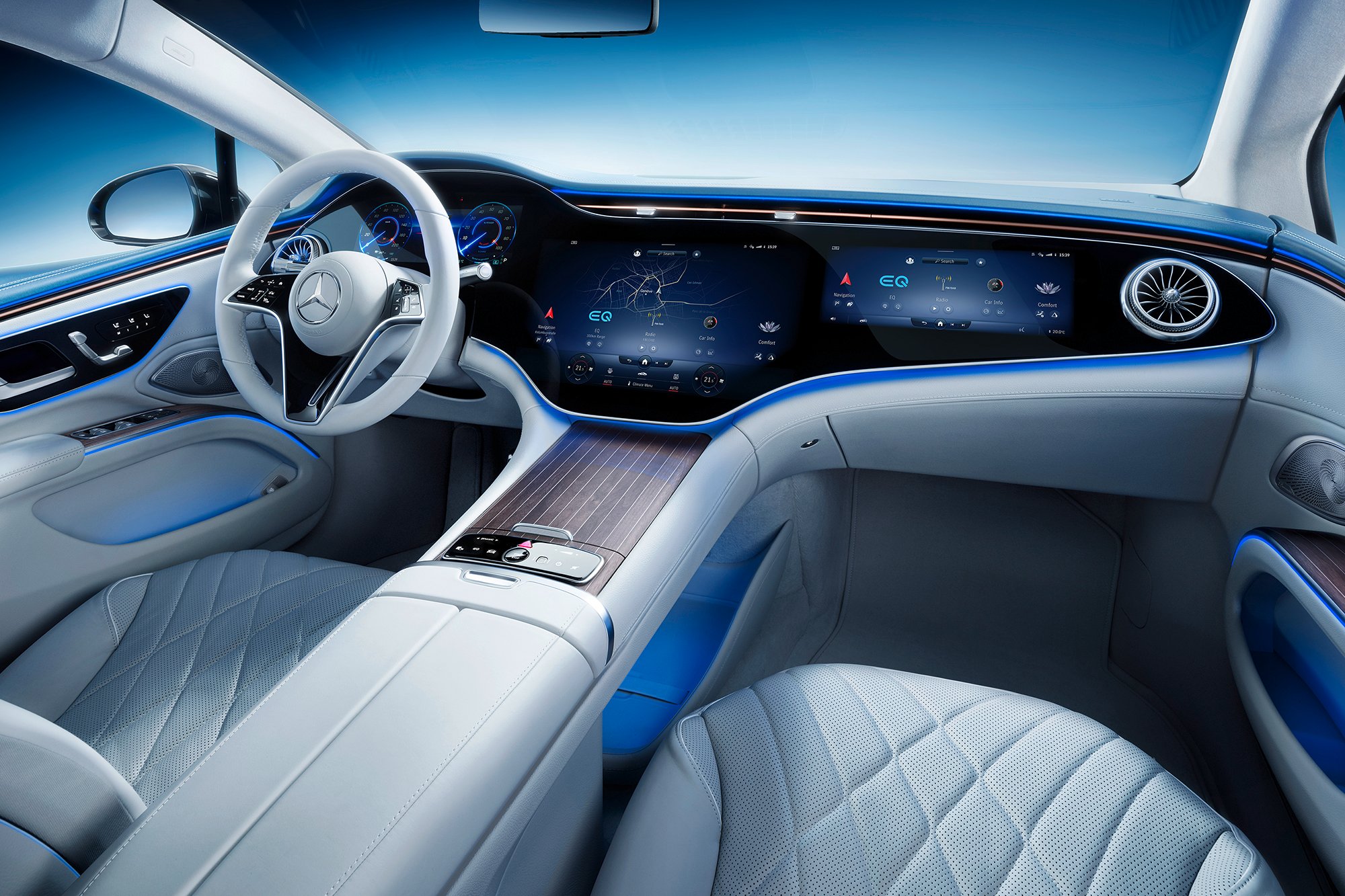
“This new architecture is scalable in every respect and can be used across models. The wheelbase and track, as well as all other system components, especially the batteries, are variable thanks to the modular design. This vehicle architecture makes Mercedes electric cars from [sedans] to large SUVs possible in the luxury segment,” added Christoph Starzynski, Vice-President of Electric Vehicle Architecture at Mercedes-Benz.
The soft curves of the EV’s surfaces also signal change. And the end of a design era. “Body creases have had their day at Mercedes-Benz,” according to the German carmaker.
Some of the features that make the EQS so aerodynamic are easily seen, like the solid black-panel grille and low-drag wheels, but much of the work is out of view underneath the car.
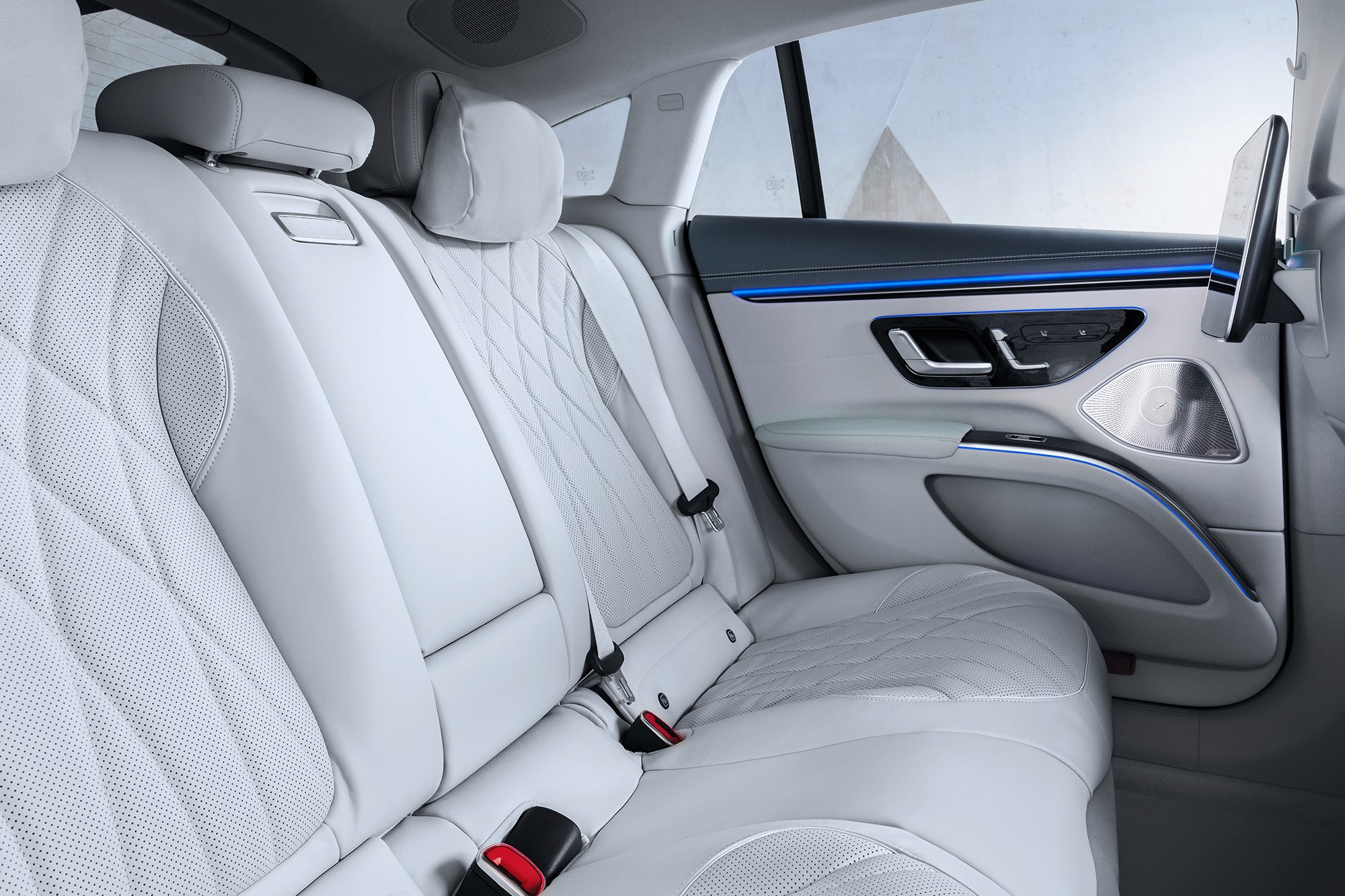
Down there is a mostly flat bottom, a benefit of the car’s big underfloor battery pack. There’s also an elaborate and aerodynamic set of panels to enclose the rear suspension, plus front and rear wheel spoilers.
But the 0.20Cd applies only to the EQS when it’s wearing a particular 19-inch AMG wheel design that will become available only at the end of 2021, months after European sales begin.
In the meantime, a range of 19-, 20-, and 21-inch wheels will be offered. Presumably, these are slightly less aerodynamic than the AMG wheel. According to Mercedes-Benz, the variation in Cd values across the EQS range is “comparatively small”.
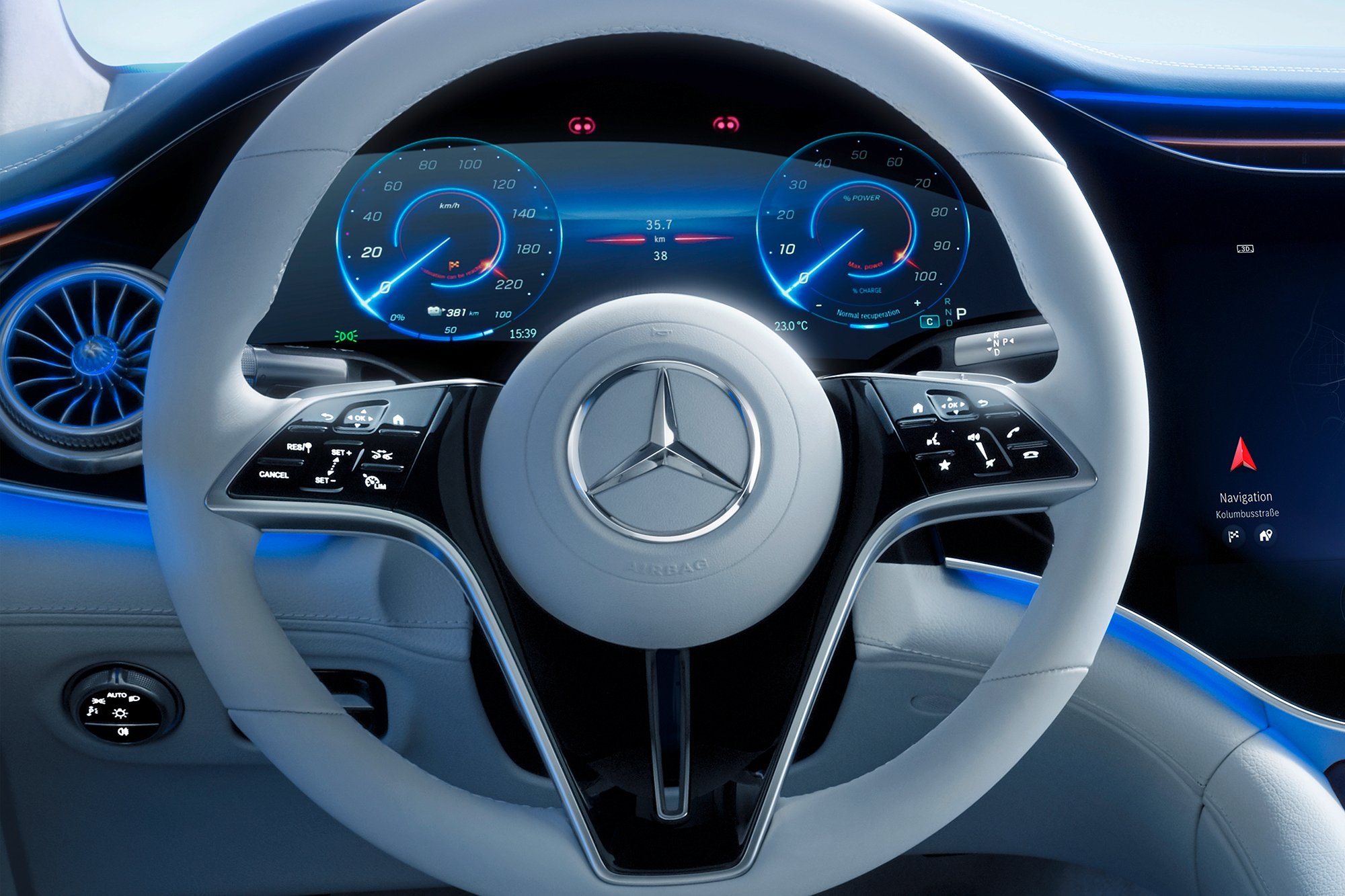
There will be two EQS variants at launch, both with a battery pack with a 108kWh of usable capacity. A smaller 90kWh pack is also planned for later.
The rear-drive 450+ is the version that achieves a massive and Tesla-trumping 770km driving range on the WLTP test cycle. It has a single electric motor delivering 245kW and 568Nm which lets it sprint from 0-100km/h in 6.2 seconds.
The all-wheel-drive EQS 580 4MATIC is quicker and more powerful. It has two motors with combined maximum outputs of 385kW and 855Nm, enabling a snappy 4.3 second 0-100km/h time despite its close to 2600kg kerb weight.
Both variants have a top speed of 210km/h.
In the 4MATIC model, the Torque Shift function ensures intelligent, continuously variable distribution of drive torque between the rear and front electric motors and seeks to add to the overall efficiency.
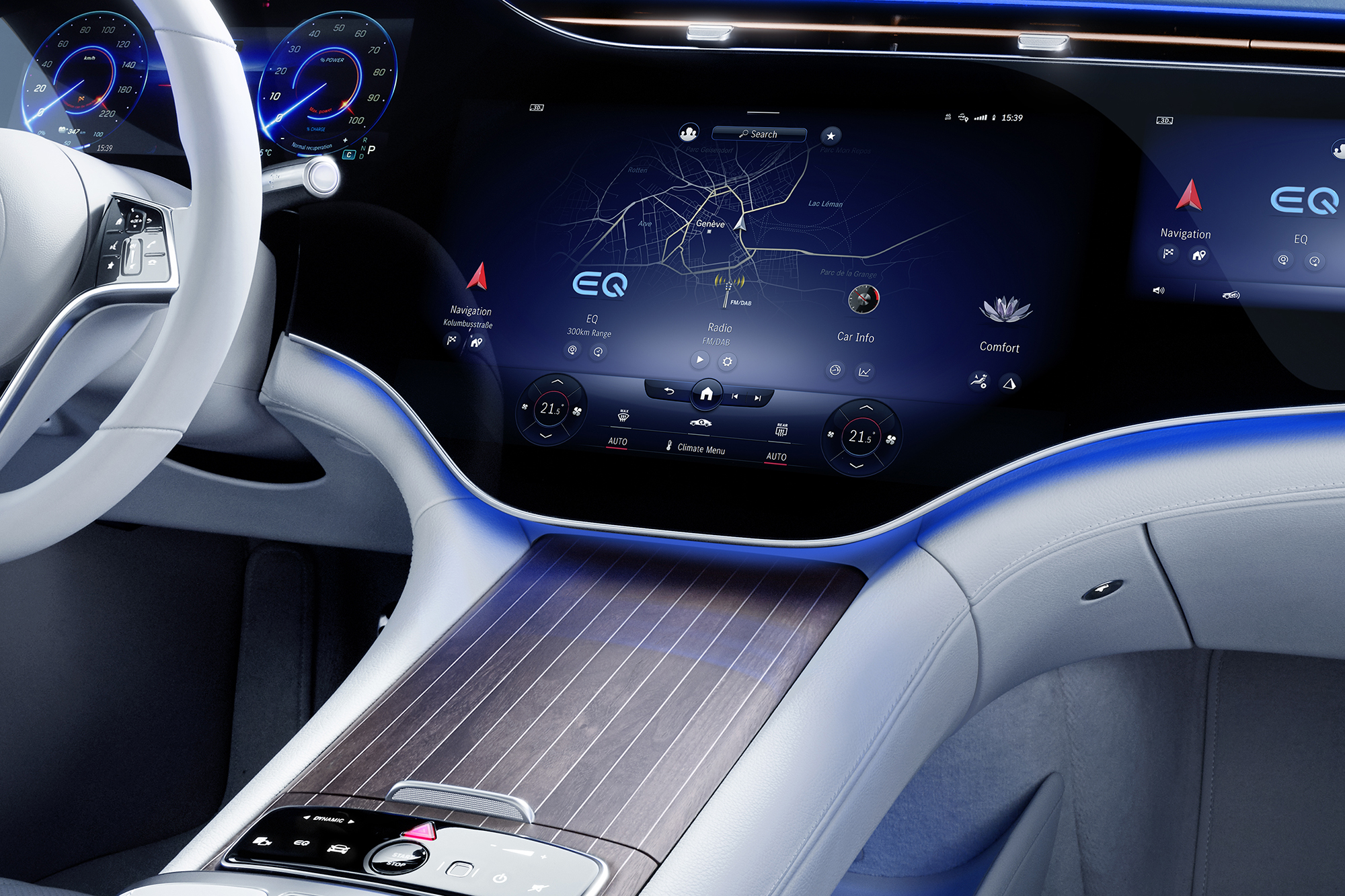
As for its charging capabilities, the EQS can be topped up with up to 200kW at fast charging stations with direct current (DC). Up to 300 kilometres of range is recharged in just 15 minutes.
The car’s super intelligent navigation system plans the fastest and most convenient route for drivers – including charging stops – based on factors such as traffic jams, speed or a change in driving style to ensure they have enough energy to complete their journey.
If there is a risk of the car not reaching the destination or a charging station the vehicle’s Active Range Monitoring activates its ECO driving functions and tells the driver via the speedo how fast/slow they need to drive to make it with the charge they have left. The EQS driver can additionally switch off some functionality to increase the range.
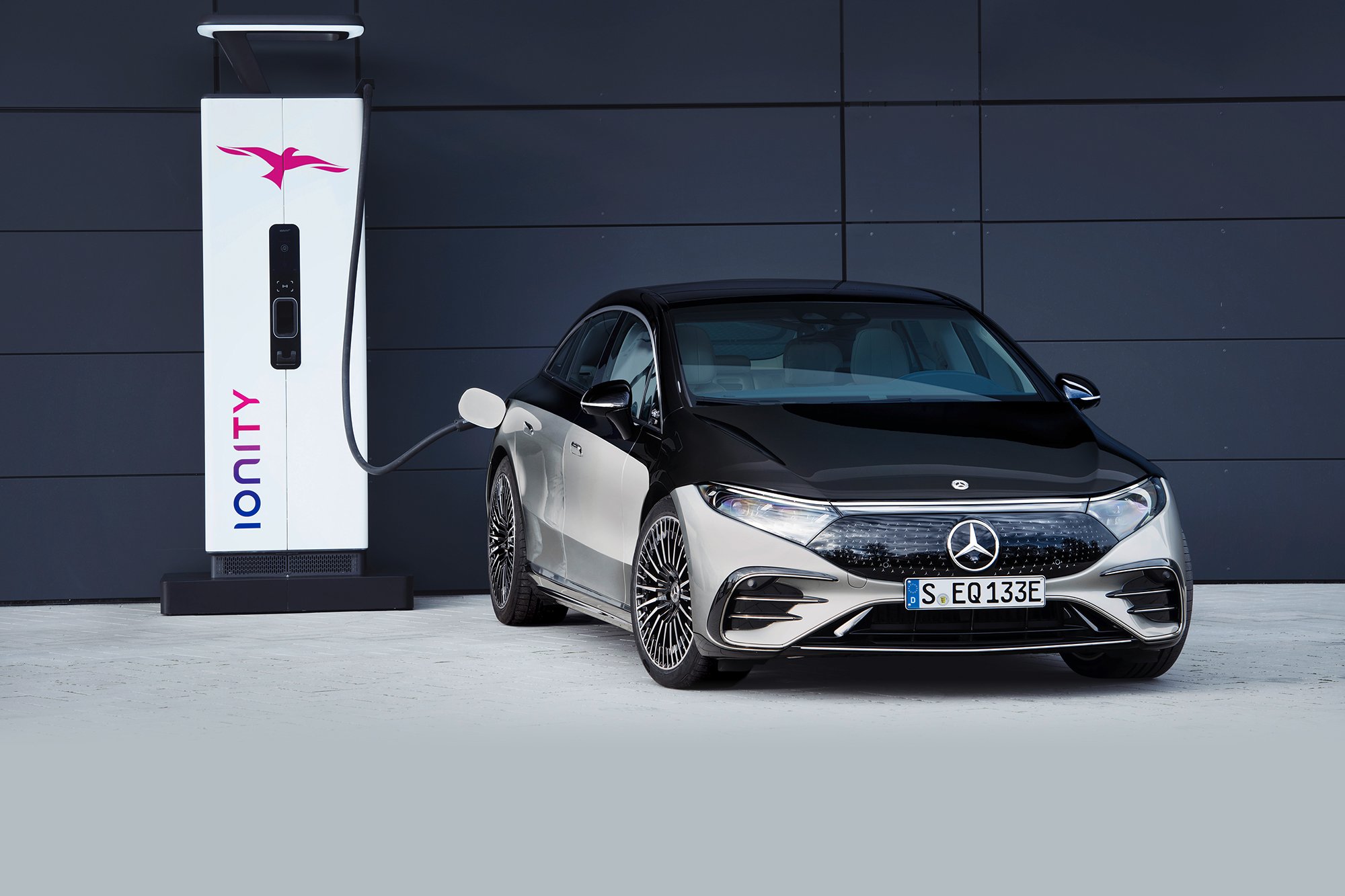
The latest generation of safety features in the EQS also include a microsleep warning from which analyses the driver’s eyelid movements through a camera on the driver’s display. This is on top of a vast suite of other driving assistance systems available, ranging from Active Steering Assist and Evasive Steering Assist to blind spot and exit warning functionality.
Mercedes-Benz used the EQS intro to announce a performance version with “up to 560kW” is being developed. There’s more than a slight whiff of AMG about that power output, which is clearly provided by a pair of motors as in the 580.
While it’s known AMG will develop high-performance versions of Mercedes-Benz EVs, no-one’s yet said exactly what they’re working on. Confirmation of the 560kW EQS seems like an answer to that question.
Less certain is how much the EQS will cost. European prices will be announced only in June, when it goes on sale.
Australia, where the EQS arrives in December, will have to wait even longer to find out how much the world’s most aerodynamic production car costs.
MORE: All EQS stories MORE: Mercedes-Benz news and reviews

